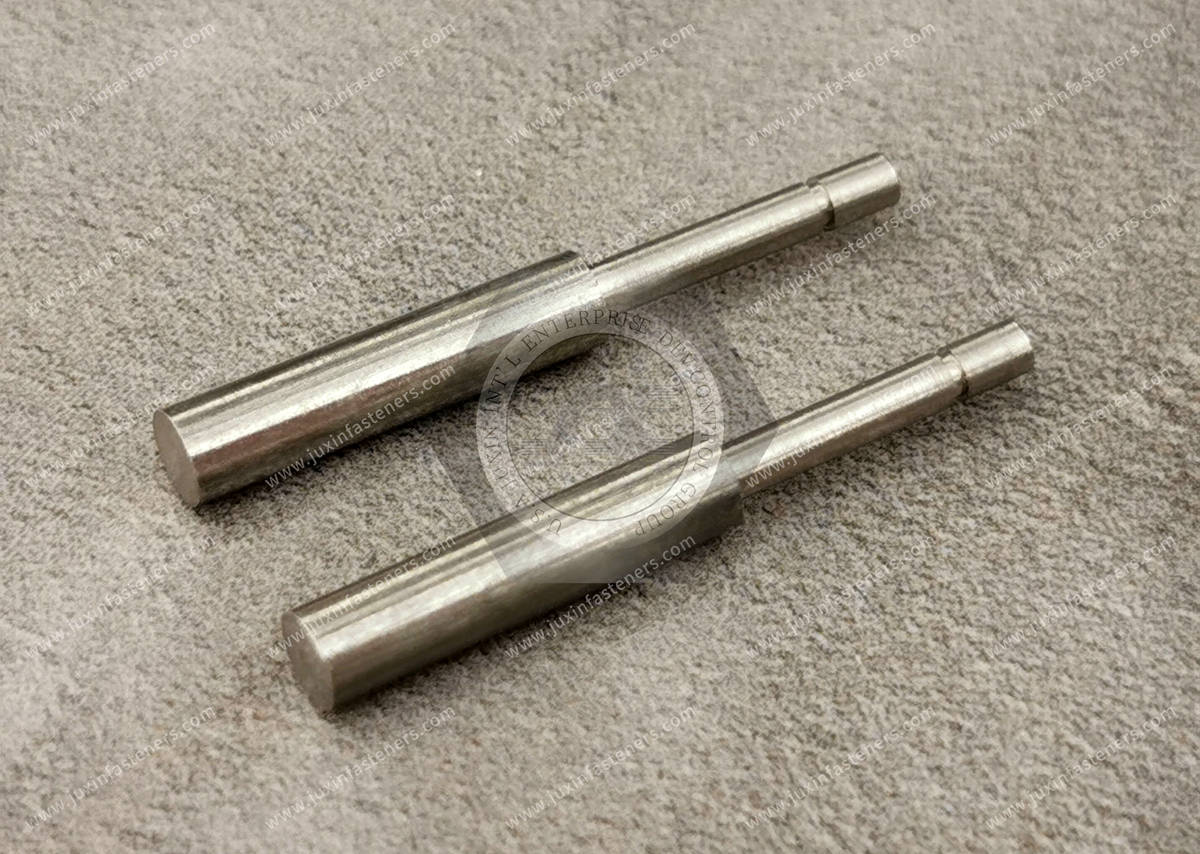Call Us
+86 136 6007 9809
Call Us
+86 136 6007 9809
Material: Stainless Steel
Product Specification
Material: iron, aluminum, copper, stainless steel, nylon PA66, PTFE, etc.
Surface treatment: environmental protection white zinc, environmental protection black zinc, environmental protection color zinc, dacromet, anodic oxidation, tin, zinc-nickel alloy, etc.
Features and principles: convenient and fast operation, flexible use, easy disassembly, and wide application.
①, When L<L ref., e=0, and the method of diameter ds is omitted
②, Material:
a) Steel, strength class (material): St, standard DIN EN 10087, DIN EN 10277-3 (these two material standards have been replaced by DIN EN ISO 683-4)
b) Stainless steel, strength class (material): A1, A2 according to standard DIN EN ISO 3506-1
c) Non-ferrous metals, strength class (material): CU3 according to standard DIN EN 28839
Requirements for stainless steel shaft machining technology:
When machining stainless steel shaft workpieces, the cutting forces can be significant. Therefore, the machine tool's tool holder should have sufficient strength and rigidity to avoid chatter during the cutting process. Quenched and tempered 45 steel can be used for this purpose. Triangular threading tools and groove cutting tools are made of powder metallurgy materials, such as cobalt high-speed steel or aluminum-containing superhard high-speed steel, and are used for low-speed turning. The recommended chip evacuation radius is 4 to 6 millimeters with a width of 2 millimeters, ensuring smoother chip evacuation and less resistance. A thread template should be used for thread cutting, and the angle should be ground and checked continuously to achieve a 60° angle.
When machining stainless steel shafts, the geometric shape of the cutting portion of the machine tool is considered in terms of rake angle, relief angle, and chip shape. To ensure smooth chip evacuation, a chip-breaking groove with a radius of 1.5 to 3 millimeters should be ground, and a rake angle of 15° to 20° is suitable. Increasing the rake angle can reduce cutting heat generation, ensuring that the cutting temperature does not become too high.
During the initial machining of stainless steel shafts, the cutting edge of the tool should have high cutting edge strength, and a smaller relief angle is preferred. During the semi-finishing of stainless steel shaft workpieces, tool wears mainly occurs on the cutting edge and relief angle, with a wear range of 6° to 8° for the relief angle. For finishing, a larger tool inclination angle should be used, as the size and direction of the tool inclination angle determine the chip flow. To control the formation of built-up edges, it is necessary to improve the surface quality of the parts, and the optimal tool inclination angle is 3° to 5°.
Product Packaging
Packing: Inner is Poly foam, out is carton. Then pallet. Carton size: 29*19*19.5CM and 23.5*17.5*8, CM and pallet size is: 215*100*90CM, or as your requirement.
Product Pictures

Packaging & Delivery and Packaging Details
1. Shrink film+wooden box
2. Cardboard box+pallet
3. Color box
4. As per the customer's request
Contact Us
Tel.:
+86 020 8621 0320
+86 020 3121 6067
Technical Support:
Navigation
SEND INQUIREY